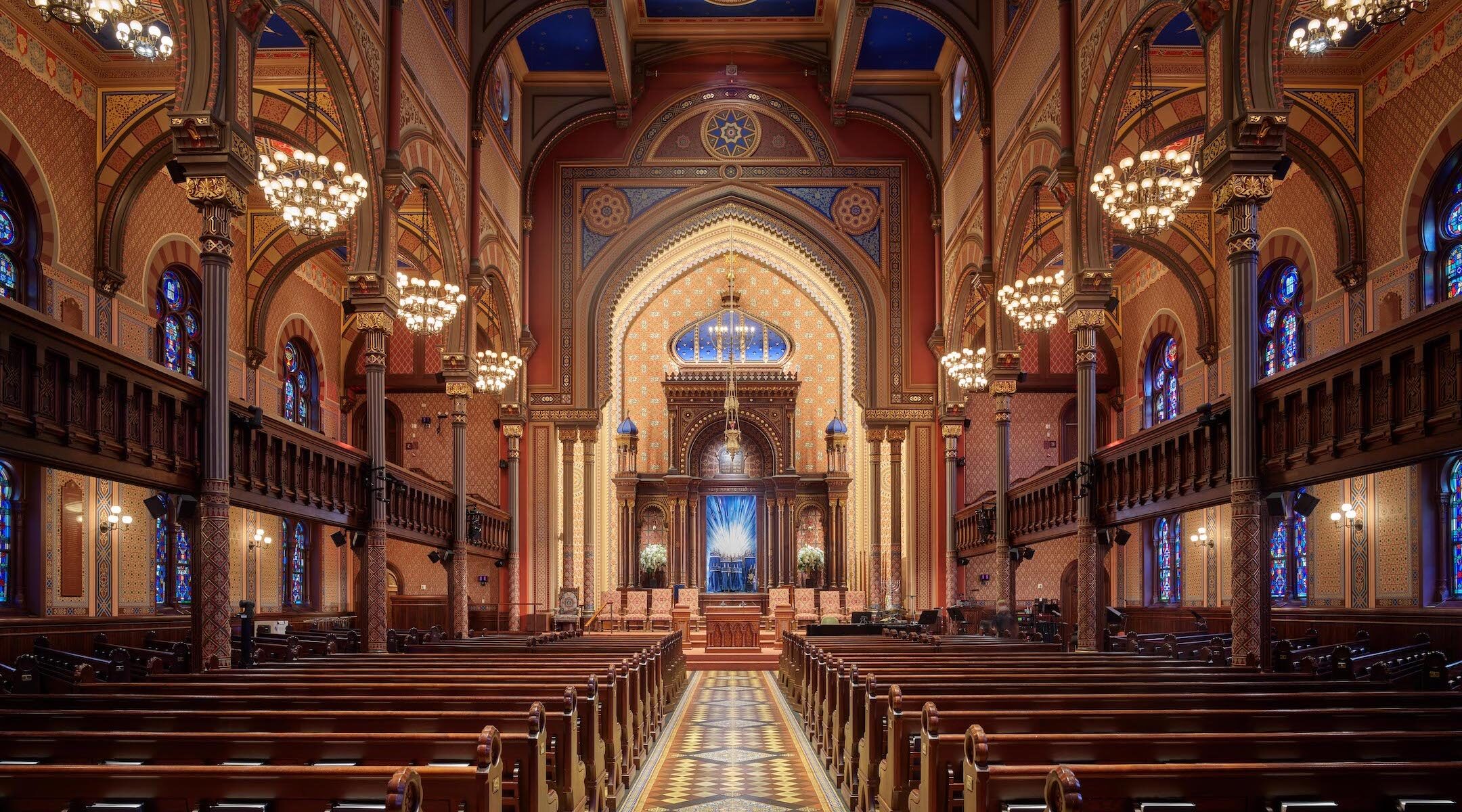(New York Jewish Week) – In the mid 1990s, New York-based photographer Michael Horowitz wandered into the Eldridge Street Synagogue, a historic synagogue that is now dedicated to preserving the history of the Jewish Lower East Side.
At the time, the synagogue was undergoing a massive, $20 million, 20-year restoration. Horowitz, who is Jewish but said he is “not religious,” was moved by the resilience and perseverance of the congregation. Even more so, he was attracted to the building’s architecture and the dedication the community poured into preserving it.
Horowitz returned to Eldridge Street over the years to document each stage of the building’s renovations. It was in 2013, while looking for a new photography project, that Horowitz realized his impulse to document Eldridge Street could be translated to houses of worship throughout the city. He spent the next decade photographing Manhattan’s churches and synagogues — 65 of which are spotlighted in his new book “Divine New York: Inside the Historic Churches and Synagogues of Manhattan.”
Together, these buildings tell a fascinating New York story of immigration, architecture, faith and progress. “I wanted to open the doors to the public,” Horowitz, 71, told the New York Jewish Week. “I wanted to show everyone what was going on inside these buildings and show them how beautiful they are.”
He worked his way from Lower Manhattan through Harlem to some of the most notable houses of worship in the borough — from St. Patrick’s Cathedral in Midtown to the First Roumanian American Congregation, a now demolished Orthodox synagogue on the Lower East Side once known as “The Cantor’s Carnegie Hall.” Since beginning the project, a dozen of the buildings Horowitz photographed have been demolished, he said.
“Everyone should take the time and view them — even if you’re not religious,” added Horowitz, who has been interested in ecclesiastical architecture since he was a student at Queens College. “Then people will get an idea of what makes that specific group of people interesting and beautiful regardless of the dogma.”
According to writer Liz Hartman, who wrote the text to accompany Horowitz’s photos, these buildings tell the story of New York itself: When immigrant groups first came to the city with few resources, the structures were small and unassuming. Synagogues were built to serve one particular community — the Lower East Side’s Bialystoker Synagogue, for example, whose congregants were new immigrants from Bialystok, Poland. As the Jewish community began to prosper — and as immigrants began to arrive from all over Europe — synagogues became grander, more confident and diverse in membership.
“New York is the story of immigration, and the churches and synagogues are the story of immigration as well,” Hartman said. “Immigrants — New Yorkers — projected themselves through their houses of worship, and in a way that’s what made the city work. I hope that we can look at this project and see a story of immigrants — and see that we can support this with different groups going forward.”
Eleven of the houses of worship featured in “Divine New York” are synagogues. The New York Jewish Week tasked Horowitz and Hartman with selecting the most historically or architecturally significant synagogues of the bunch —no easy task because every house of worship in the book is a historic and notable one. Keep reading to see their selections and to learn more about these important Jewish sites.
Eldridge Street Synagogue (12 Eldridge St.)
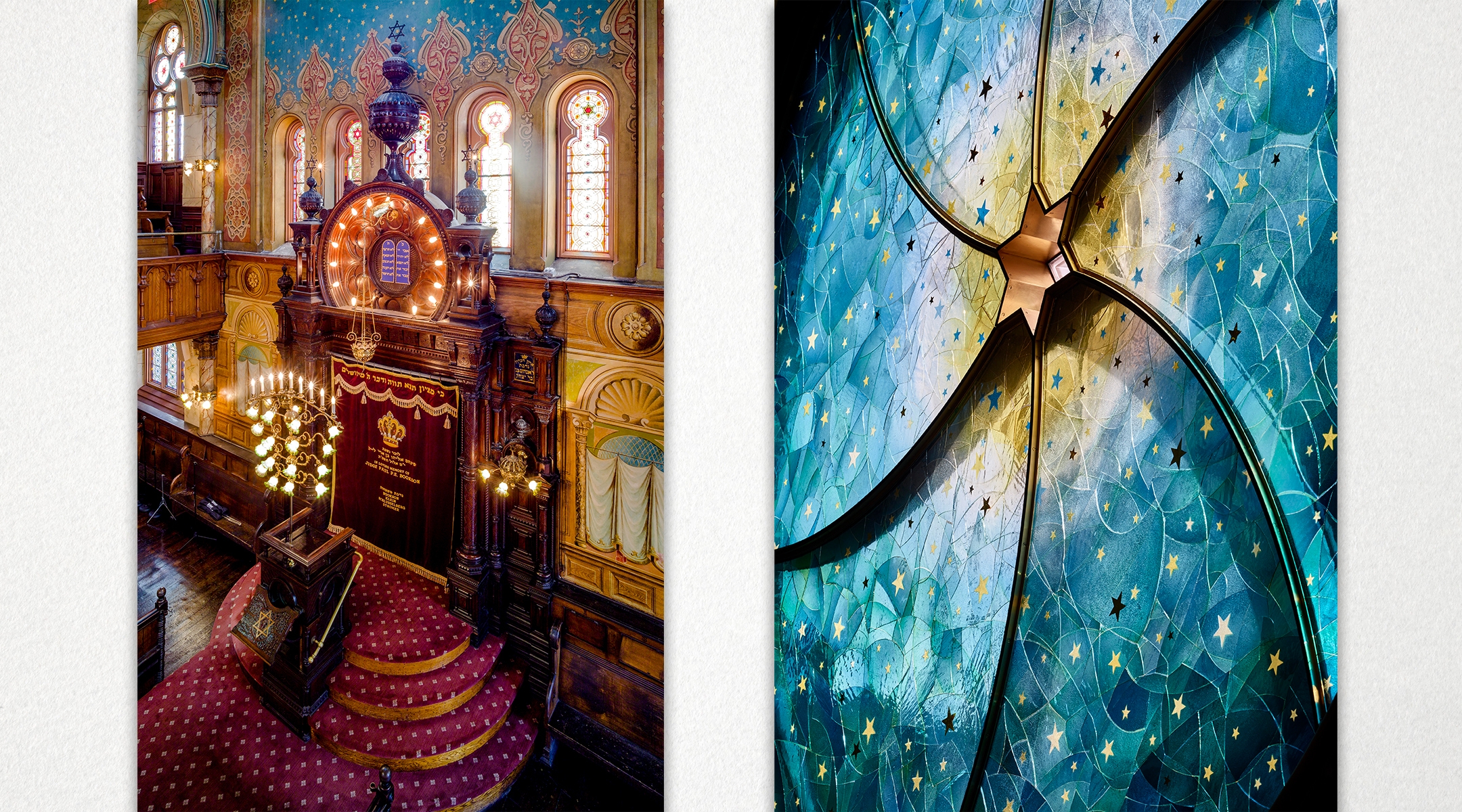
A prominent stained glass window at Eldridge Street was destroyed in a 1938 hurricane — it wasn’t replaced until 2010, with a design from artist Kiki Smith (right). (Michael Horowitz)
This historic Lower East Side synagogue, dedicated in 1887, was the first synagogue building in New York erected specifically as a Jewish house of worship. “Right from the start, it distinguished itself from other synagogues by welcoming Jews from all over Eastern Europe while other congregations were defined by the towns or cities from which they came,” Hartman writes in the book. “It was also economically diverse; migrants right off the boat, peddlers, sweatshop workers, bankers, and entertainers were among its members.” The synagogue was also Orthodox at a time when New York’s grandest synagogues were being built by Reform congregations.
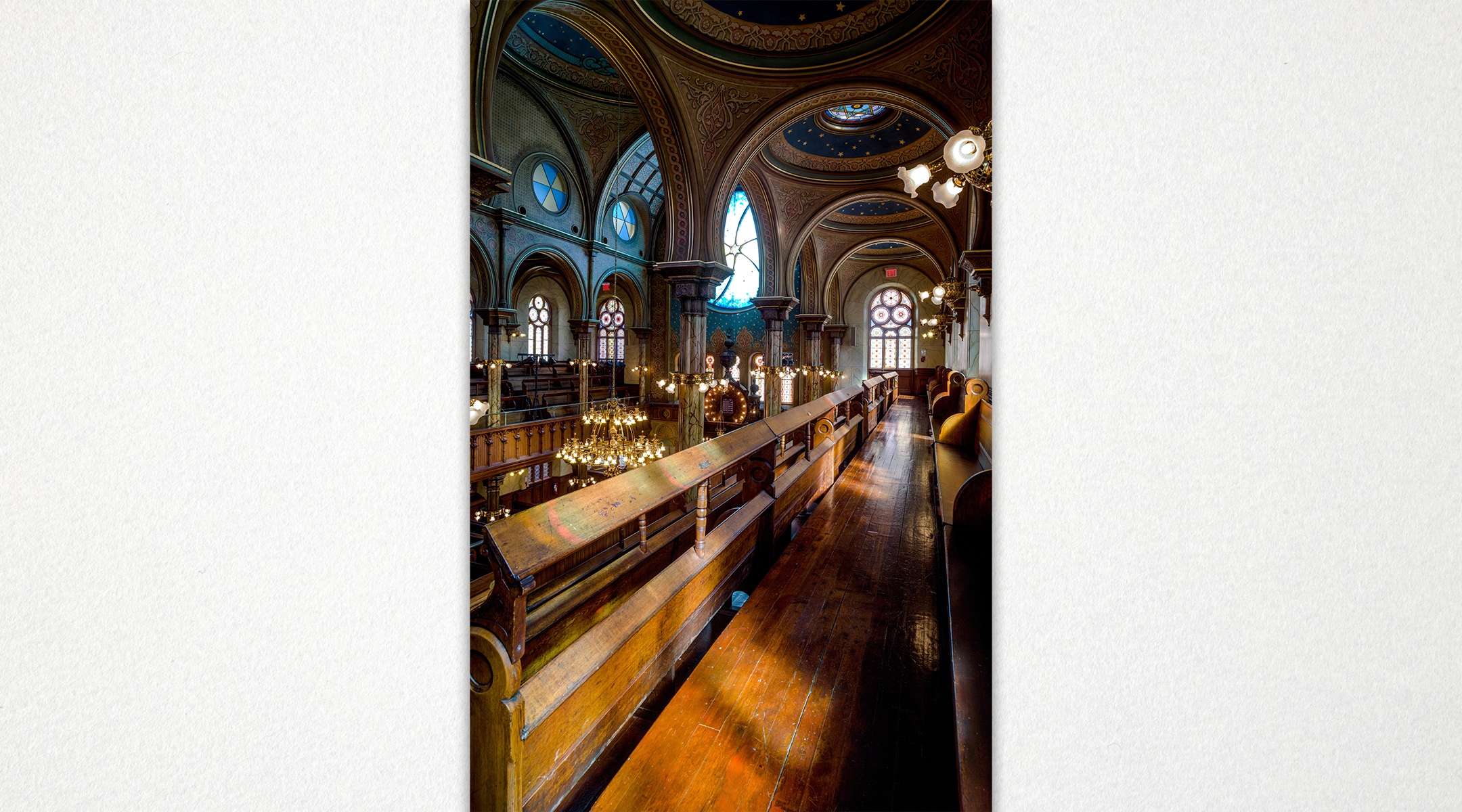
Eldridge Street Synagogue as seen from the balcony. (Michael Horowitz)
For decades, the synagogue thrived as Jewish immigrants filled the Lower East Side. However, by 1940, facing a dwindling membership, the congregation could no longer maintain the main sanctuary and closed it down. By 1970, the building was in danger of collapse and demolition. Students, journalists and historians teamed up to save the synagogue; the restoration began in 1986 and continued to 2007. Today, the building is known as the Eldridge Street Synagogue and Museum, which features exhibits, history and lectures on immigrant life in New York.
The Bialystoker Synagogue (7-11 Bialystoker Pl.)
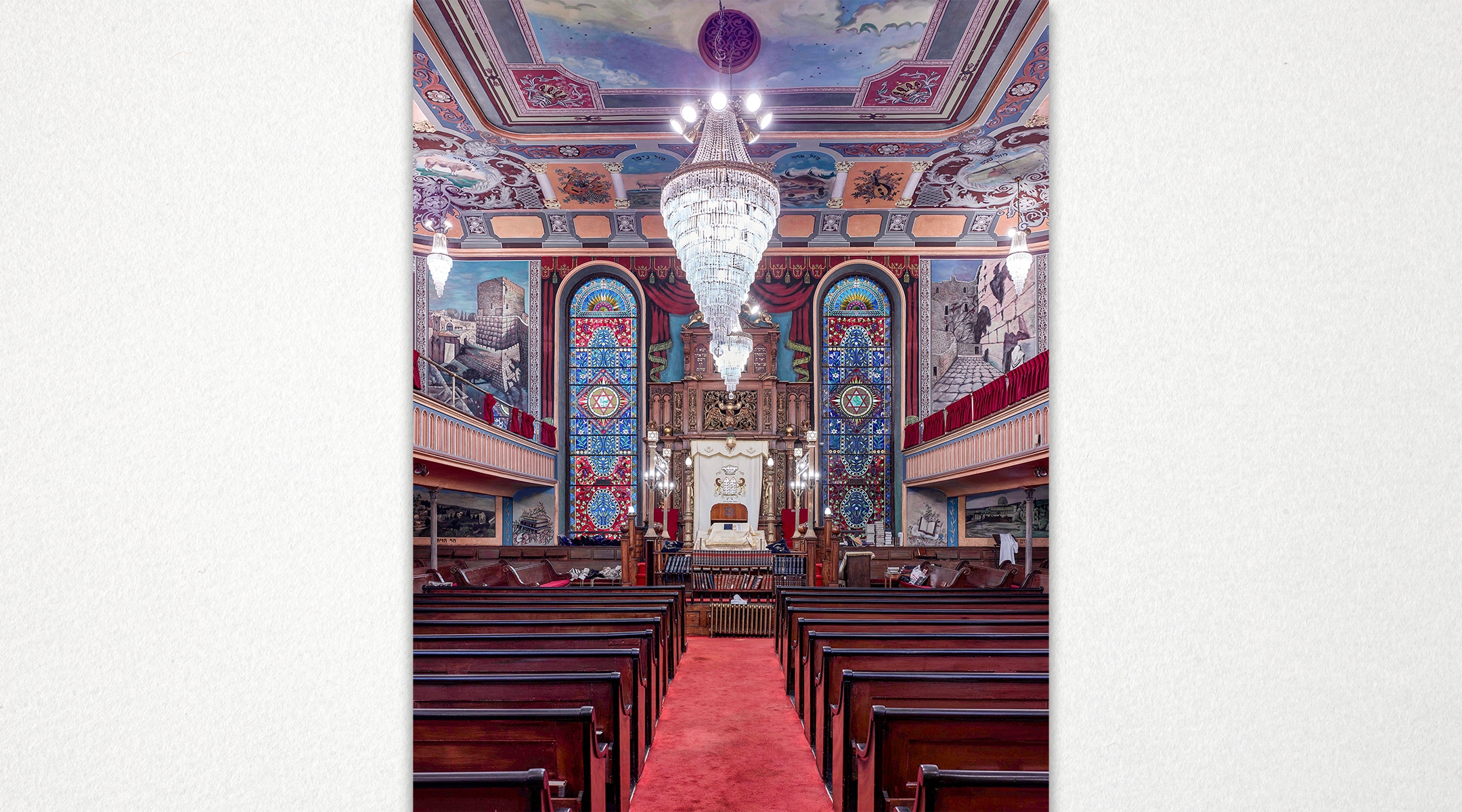
The Bialystoker Synagogue is found in a Lower East Side building with an unassuming exterior, a holdover from the Methodist Church that was once there. (Michael Horowitz)
Founded on the Lower East Side in 1865, the Bialystoker Synagogue made its home in 1826 church building, purchased from a Methodist congregation, made with schist from Manhattan bedrock. The congregation maintained the austere exterior — though the interior was updated dramatically and boasts a grand ark and floor-to-ceiling stained glass windows. Curiously, an image of a lobster is featured on the elaborately painted ceiling murals — with little explanation for how the non-kosher crustacean might fit into the synagogue’s mission or Jewish identity. One hint is that the panel marks the Hebrew month of Tammuz, which corresponds with the astrological sign of Cancer, the crab. “It was bought from the Methodist Mariner’s Church, and there were a lot of fishermen that belonged to that church,” Horowitz told the New York Jewish Week. Or perhaps a kosher-keeping muralist didn’t know the difference between a lobster and a crab.
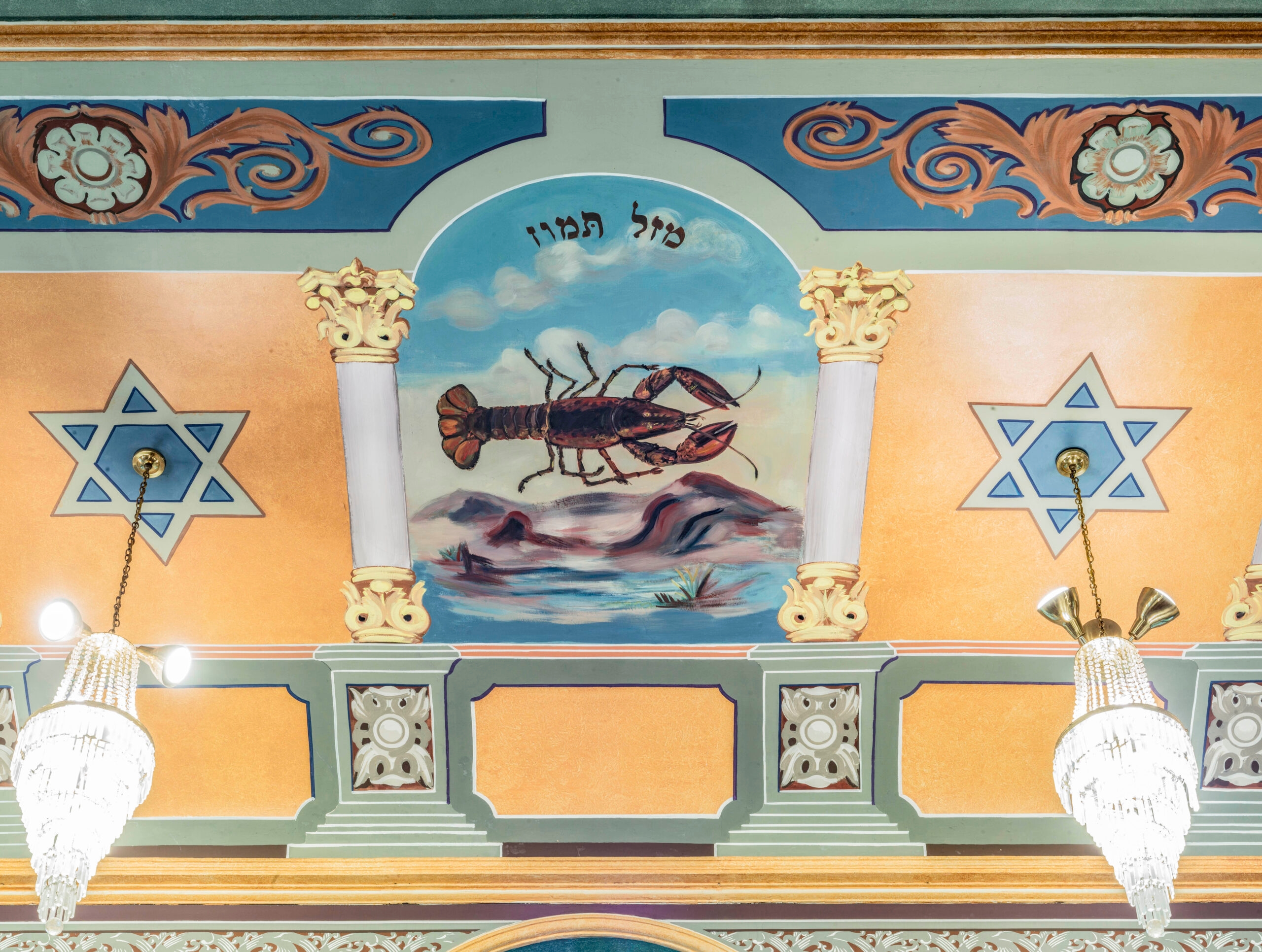
An image of a lobster is on the ceiling of the synagogue, in a mural marking the Hebrew month of Tammuz. (Michael Horowitz)
The synagogue, built in a traditional Orthodox style, has a balcony for women worshippers. In one corner of the balcony, a hidden door leads to an attic, which Hartman writes was allegedly a stop on the Underground Railroad.
The synagogue underwent a renovation in 1988 and is still an active traditional Orthodox congregation.
Central Synagogue (652 Lexington Ave.)
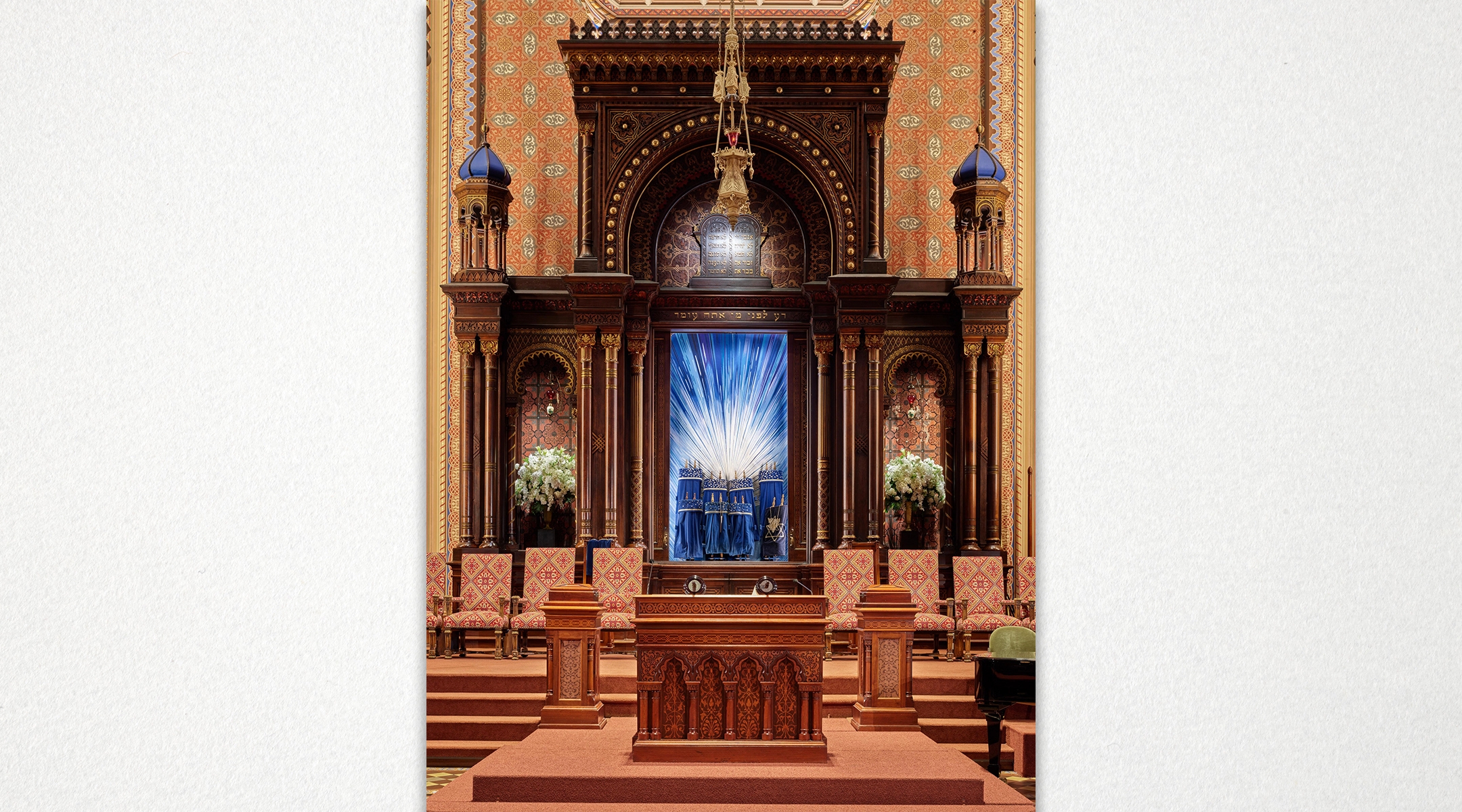
Central Synagogue moved into its Lexington Avenue location in 1872. While most congregations face east, towards Jerusalem, Central faces west. Hartman explains that the real estate was “too good to pass up,” and the congregation decided to have an entrance on Lexington. (Michael Horowitz)
Completed in 1872, the building that houses the renowned Reform congregation in Midtown East seats nearly 1,500 people — a fraction of the congregation’s approximately 2,600 members. That’s a long way from the original 18 members from Bohemia, a region of the present-day Czech Republic, who started the congregation in 1846 in a remodeled church in the East Village.
Central Synagogue was built around the same time and in the same neighborhood as the Episcopal St. Thomas Cathedral and the Catholic St. Patrick’s Cathedral — some of New York’s grandest churches, which are also featured in the book. “Each of the groups were saying, ‘We’re here and we’re proud and we have prosperity.’ They were showing off, but in a really beautiful way,” Hartman said. “For Central, it was very much a message of assimilation. They were as interested in liberty, inclusion and reform as they were in Jewish ritual.”
Congregation Shearith Israel (8 West 70th St.)
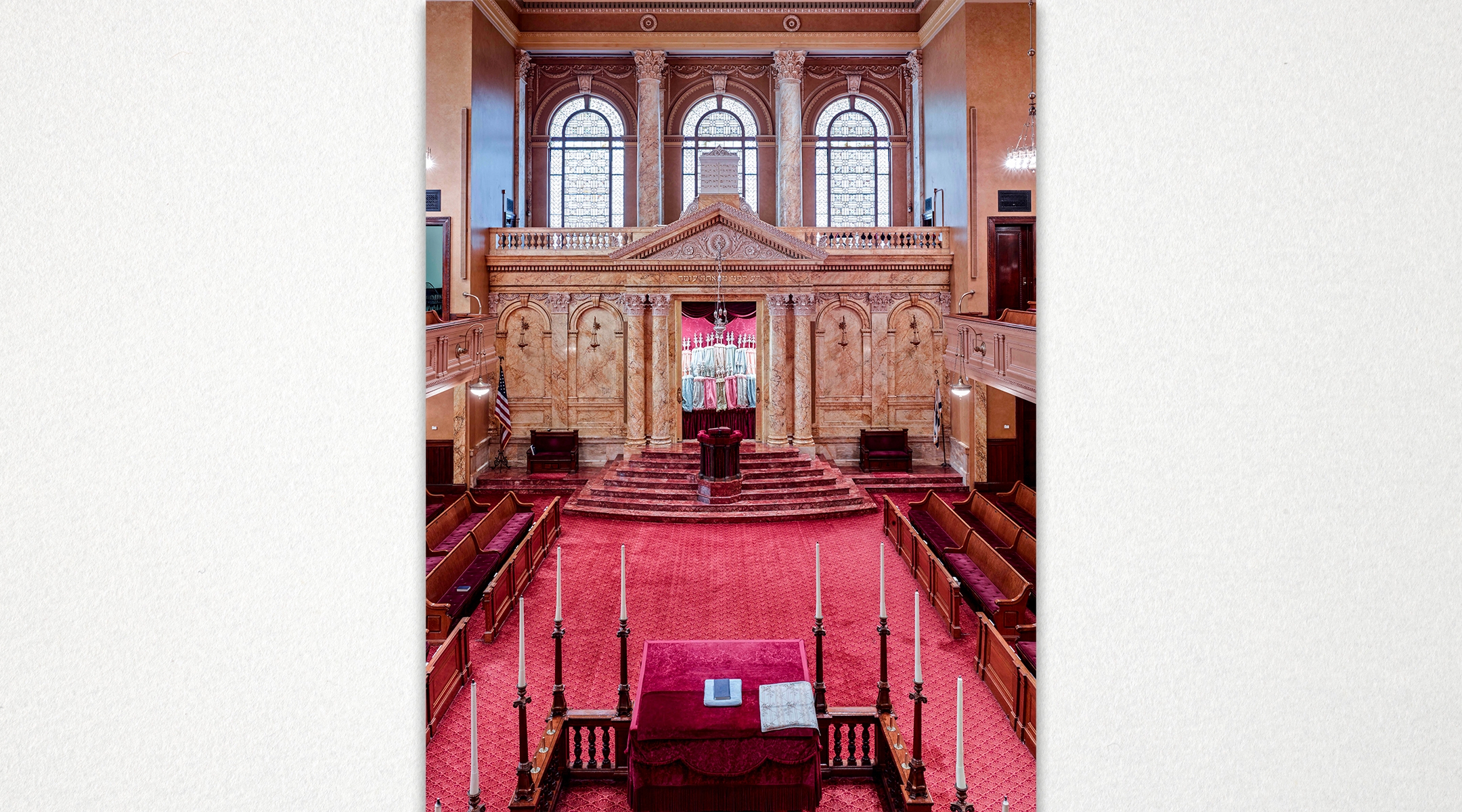
Congregation Shearith Israel, also known as the Spanish and Portuguese Synagogue, was the only synagogue in New York for nearly a century and a half. The congregation moved several times before finding a permanent home on the Upper West Side. (Michael Horowitz)
Congregation Shearith Israel, also known as the Spanish and Portuguese Synagogue, was the first Jewish congregation in the United States, made up of Sephardic Jews who had arrived in New York in 1654 via Recife, Brazil. The congregation was the only Jewish one in New York for a century and a half before a faction of Ashkenazi members grew big enough to split off and form B’nai Jeshurun in 1825. While the congregation was housed in several different buildings throughout its history, it has been in its current home on the Upper West Side since 1896.
Temple Emanu-El (1 East 65th St.)
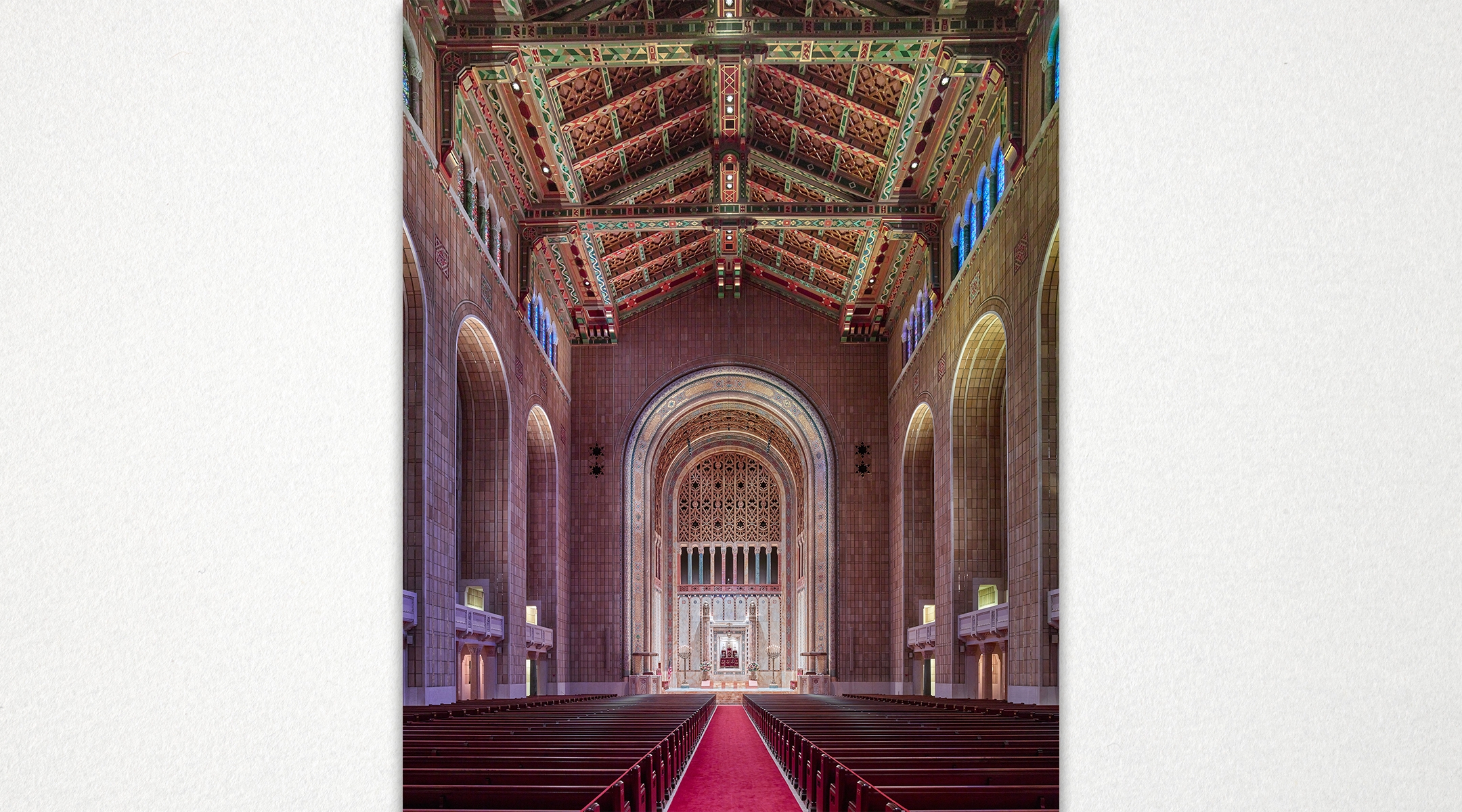
Temple Emanu-El was named one of eight “religious” wonders in the United States by CNN, writes Hartman. (Michael Horowitz)
Founded by a small group of German Jews in 1845, Temple Emanu-El has become one of the grandest and more well-known synagogues in New York, boasting prominent members like ex-mayors Ed Koch and Mike Bloomberg, as well as hundreds of other influential Manhattanites.
Considered one of the leading synagogues in the Reform movement, Emanu-El made waves throughout the 19th century for translating all-Hebrew services into German, then English, as well as for installing an organ and for abandoning the mechitzah, the traditional divider between men and women during prayer. After several spots downtown, the congregation moved into its current building on 5th Avenue — the former site of John Jacob Astor’s mansion — in 1927. It can hold 2,500 people, making it one of the largest synagogues in the world.
Park East Synagogue (163 East 67th St.)
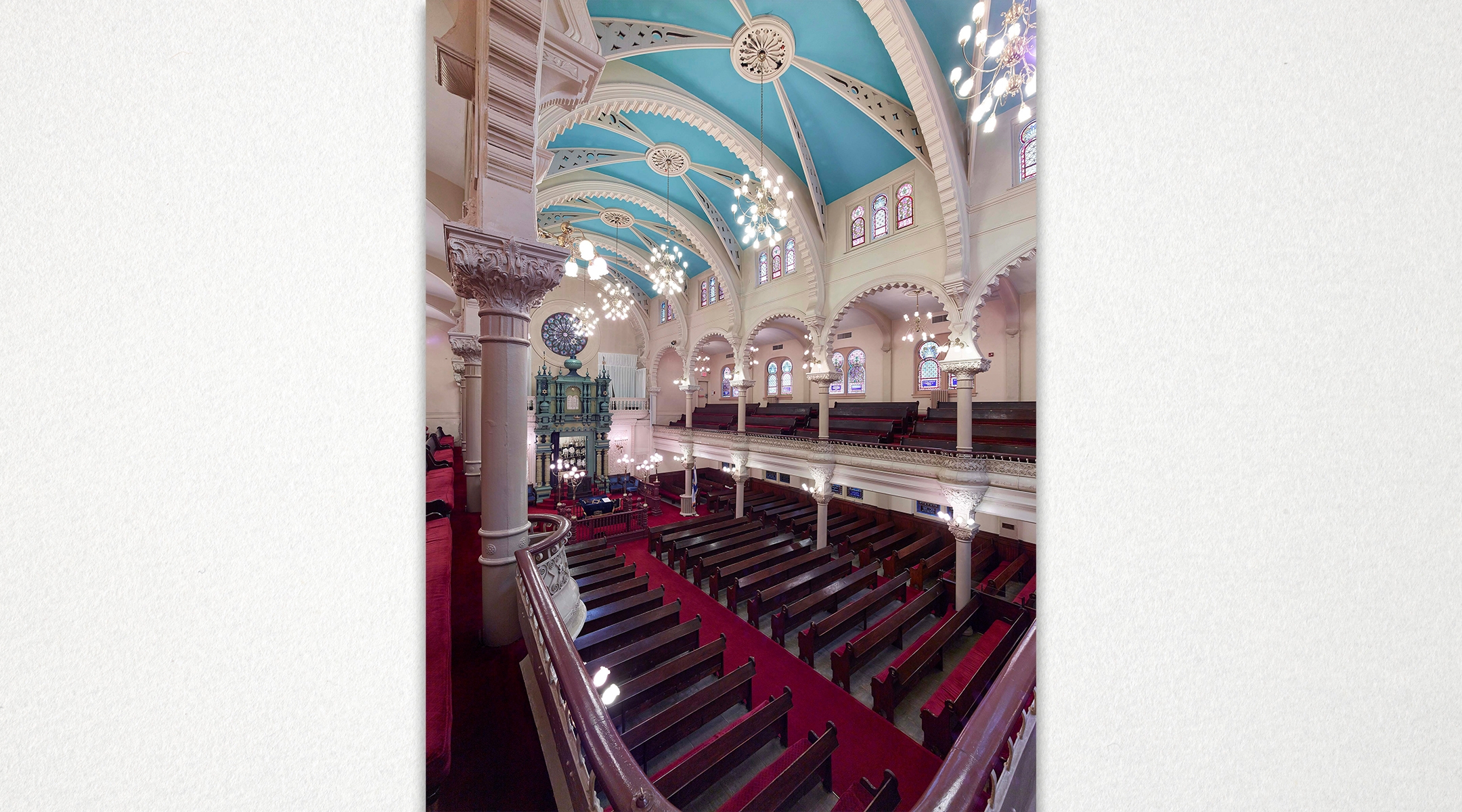
The architects Schneider and Herter “took a no-holds-barred approach to the elaborate Byzantine-Moorish design of the synagogue,” writes Hartman of the arches, colors, stained glass and ark at Park East. (Michael Horowitz)
Built in 1890 by brothers Jonas and Samuel Ephraim in honor of their late father, Zichron Ephraim, this Orthodox synagogue has elaborate and eclectic arches, cupolas and stained glass throughout its design, reflecting its prominence in the New York Jewish community. “The design of the synagogue is anything but subtle and so, too, is its spiritual leader for more than 50 years, Rabbi Arthur Schneier, who is outspoken in his advocacy of religious freedom, human rights, and mutual respect,” writes Hartman.
It was Schneier who invited Pope Benedict XVI to Park East in 2008, marking the first ever papal visit to a synagogue in the United States. Schneier, who is currently searching for a successor, was conferred a papal knighthood for interfaith effort for religious freedom. For many decades, Park East was a haven for Jews who immigrated from the Soviet Union.
The New York Jewish Week brings you the stories behind the headlines, keeping you connected to Jewish life in New York. Help sustain the reporting you trust by donating today.
